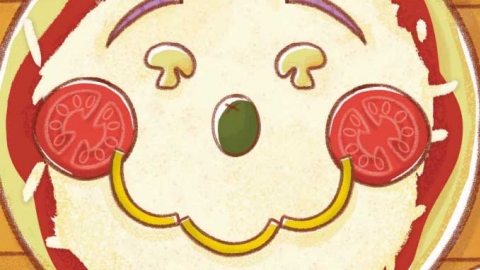Eliminating Family Food Waste
Changing kids from wasters to savers
Each year, 25% of the food we buy gets thrown out from our own kitchens. If you have young children, you’re likely wasting even more. A study conducted by the USDA revealed that children are the biggest food wasters in a household. From picky eaters to changing preferences, I’m sure this isn’t news to many parents, but what is a shock is that number in terms of dollars. American Consumers spend $371 per person, per year on food that gets wasted, and that number is even higher for children. So for a family of five with children, the total amount balloons to around $2000.
Some families may already be taking action to reduce food waste, but in order to be successful, all household waste contributors need to be on board. While parents can take the lead by learning how to store produce for maximum shelf life or smart leftover repurposing strategies, it’s youth engagement and excitement in the task that will really impact decreasing household food waste.
Most children, as well as many adults, are visual learners. So, in order to show just how much food is wasted in households each week, we have designed a simple experiment to illustrate the point. Below are steps, first for talking to your family about the importance of food waste and why you’re doing this test, then for setting up and conducting the experiment. Last, we’ll make some suggestions for moving forward with waste reduction.
Why Does Food Waste Matter?
Before beginning, all household members need to be prepped on why you are conducting this experiment. Begin by teaching your children about where food comes from. In addition to conversations at home, take them to the farmers market and introduce them to the people who grow their produce, and raise their meat and dairy. Encourage them to ask questions about how different plants grow, or how long it takes a chicken to lay an egg. If they develop a relationship with their local farmer, they are far more likely to gobble up every single carrot that “Farmer Heather” grew for them, or every egg that “Farmer Dave’s Chickens” laid.
Next, talk to your family about what happens to food that it is wasted. Explain that the food we don’t eat doesn’t just disappear and show them images of garbage building up. This video does a good job visualizing food waste and sharing ideas to take action.
Just like the 1980’s “Give a Hoot, Don’t Pollute” campaign aimed at inspiring children to be the catalyst for recycling efforts, if we engage children and motivate them to be champions of change on the food waste home front, we’re sure to see the largest impact.
The Experiment:
For one week, collect and measure all the food that would normally be thrown away in your household. This means any food that would be removed from the fridge and tossed, to any scraps that are scraped off dinner plates into the trash.
Set up:
Locate a scale. Find a receptacle that will hold all your food waste for the week. This could be a garbage pail or garbage bag. If your selected trash receptacle has a significant weight to it, make sure you measure and write it down before beginning.
Decide where the food waste container will be kept for the week. The easiest spot is outside, but make sure you have cover on it at night to deter any scavenging animals. If you have enough space, a freezer is another good option. The food scraps will freeze and you won’t have to worry about smells or predators.
Make sure everyone knows the guidelines: All food scraps need to be added. Place a note next to the kitchen garbage can as a reminder. Do you take lunches to work or school? Make sure all family members bring home lunch scraps to be added to the collection.
Have everyone make a prediction on the pounds of food that will be collected at the end of the week.
Begin!
Eat and dispose of food as you normally would—the experiment will not be as impactful if you try to improve the first time around.
The Results:
After seven days, weigh and record your results. Spend time as a family talking about how the experiment went. Was the final amount more or less that predicted? What did we learn from the test?
The Plan of Action:
Continue your conversation about improvement for the future. What are steps or actions we can take to reduced our food waste? Make goals as individuals and a family. Some ideas for reducing family waste can include:
Saving what has not been eaten. If children declare that they are full before they have finished their plates, save what is left on it. If they come back in an hour saying that they are hungry, offer them their leftover food, not new snacks.
Don’t buy travel snacks for road trips. Instead pack that almost-empty bag of pretzels, those last few carrots or fruits that will become overripe in a day or two. These are normally things that would be passed on at home, but in a car with limited options, they will be happily gobbled up.
Implement Hodgepodge Fridays! Turn Friday supper a fun way to clear out fridge. Leftover veggies or meat? Create a hodgepodge frittata. Get creative with toppings for a homemade pizza too. Kids will get excited about the challenge, and the chance to play chef while they design original meal ideas and pairings. Check out some of the recipe ideas.
After one month of actively working to reduce your food waste, conduct the experiment again. What was the difference between the first and second experiments? Was it a significant reduction or do you need to revisit and revise your plan of action for reducing waste? Like many lifestyle changes, reducing food waste may take awhile to adjust to and become habit, but the important thing is to keep working on it as a family.







